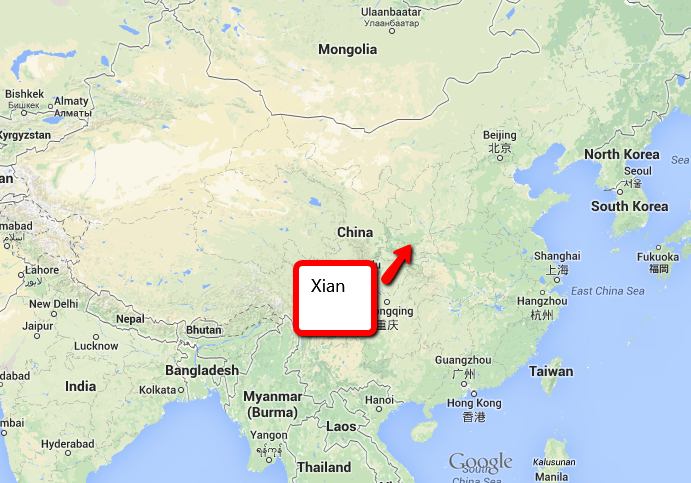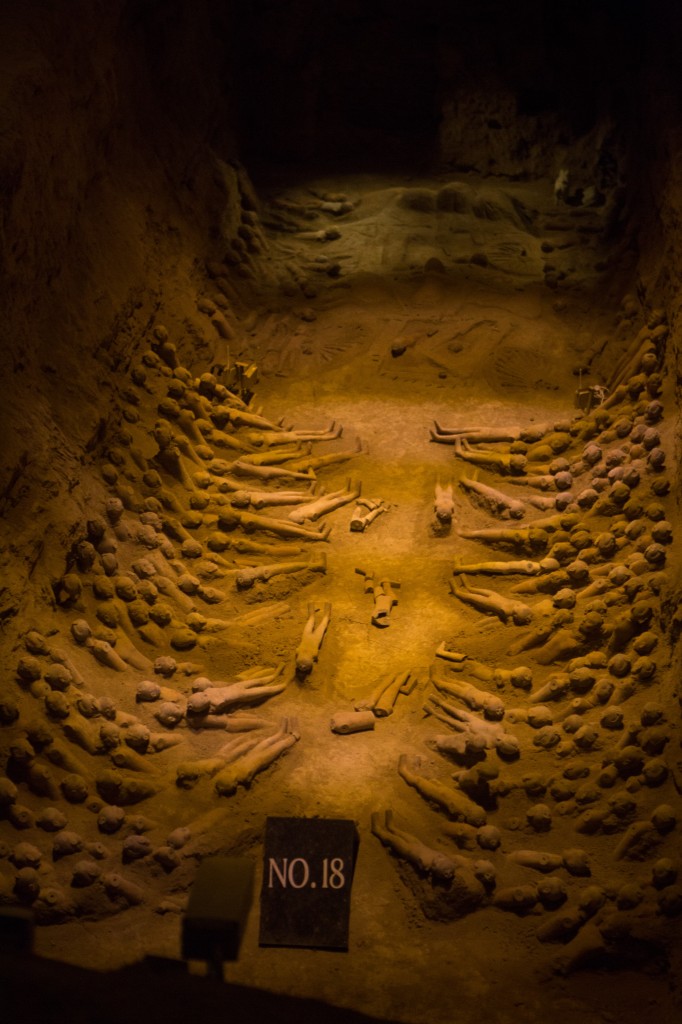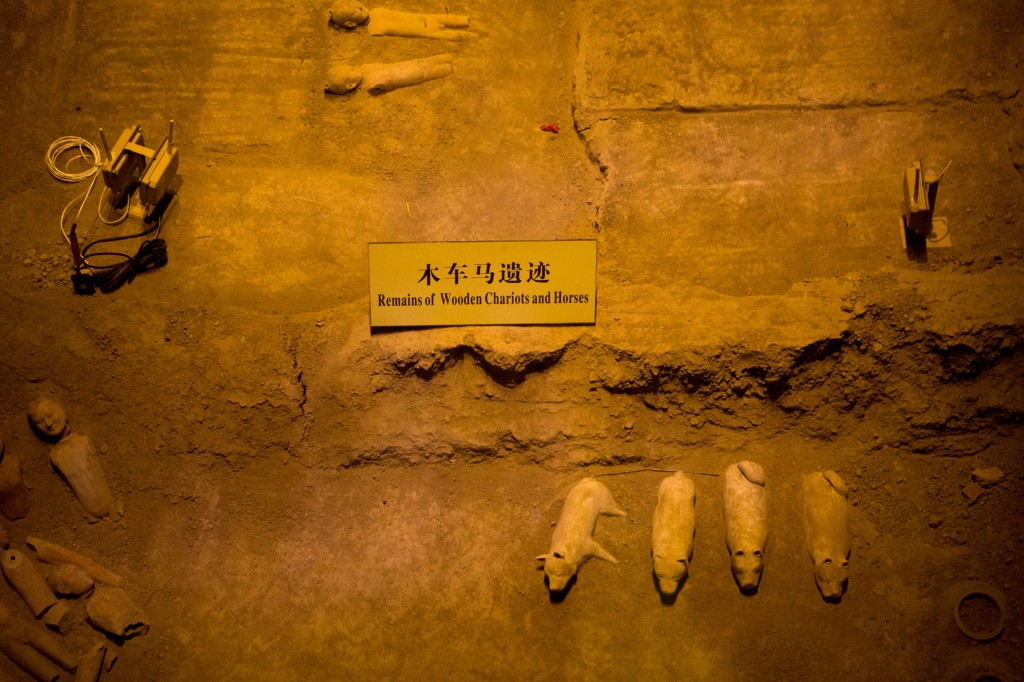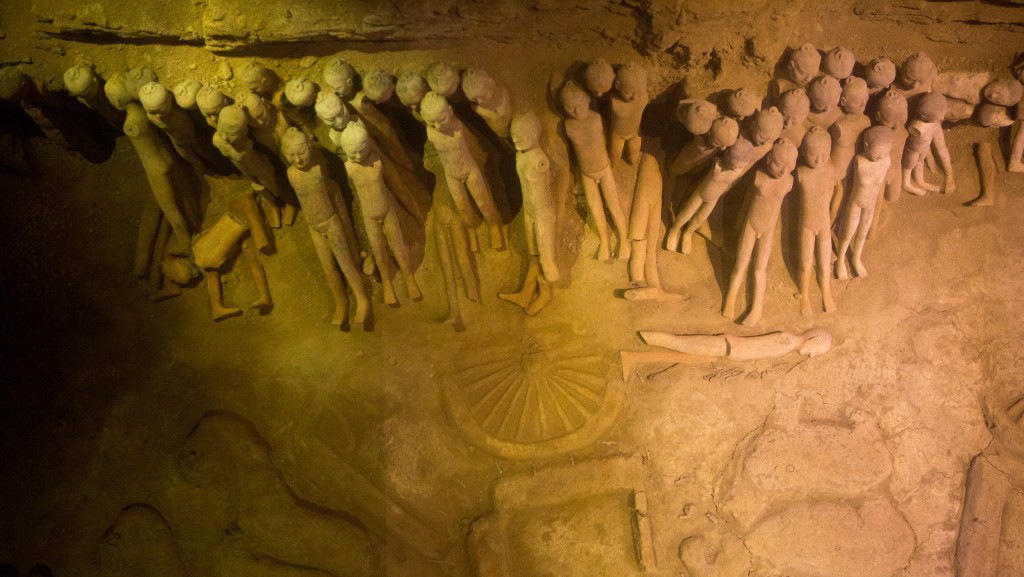The Terra-cotta Warriors are Xian’s biggest attraction, but the Han Emperor Jingdi’s smaller tomb on the outskirts of Xian is as impressive, if not as grand. Hundred foot tall tomb-mounds dapple the burial site just across the Wei River from Xian. Beneath these hills lie the tombs of the Emperor, his wife and others.
Inside a series of pits surrounding the tomb are Terra-cotta servants, not unlike those in the more famous tomb east of Xian. However, no one looking at the two could ever confuse a picture of them. Unlike its larger cousin, Emperor Jingdi’s tomb is filled with small, naked, armless clay figurines with little detail to distinguish them, alongside a number of other figurines, pigs, lambs, household items. Deeper in the tomb, the naked terra-cotta figurines give way to terra-cotta farm animals, pigs, lambs and, strangely, wolves, along with some household items.
Jingdi’s tomb is less grand than the Terra-cotta Warriors, but the place feels like Chinese history is real, and not a tourist attraction. The smallness of the tombs give it a more intimate nature. Staring down at his naked terra-cotta servants, I feel like I know Jingdi better.
Emperor Jingdi is also important to our project because the first signs of the Silk Road emerged around the time of his reign. Emperor Jingdi is contemporary with the mid- to late Roman Republic, and it was during this time when trade from China into Central Asia began to emerge. Xian today, the Xian of the Muslim Quarter, the Xian with clear signs of influence farther west, began around the time that these naked terra-cotta servants were interred into these pits.




